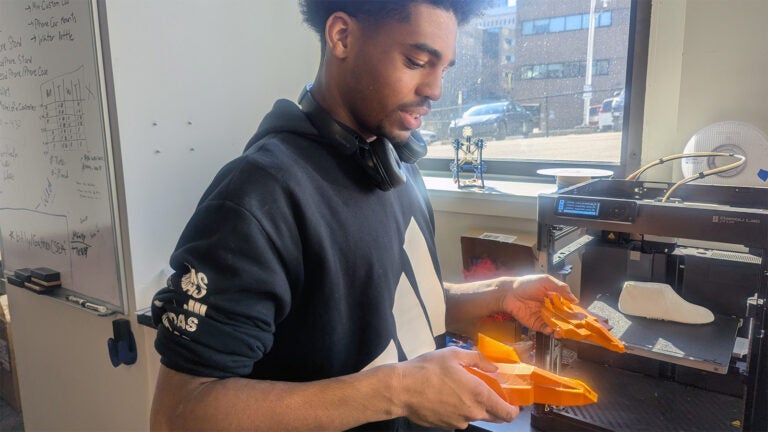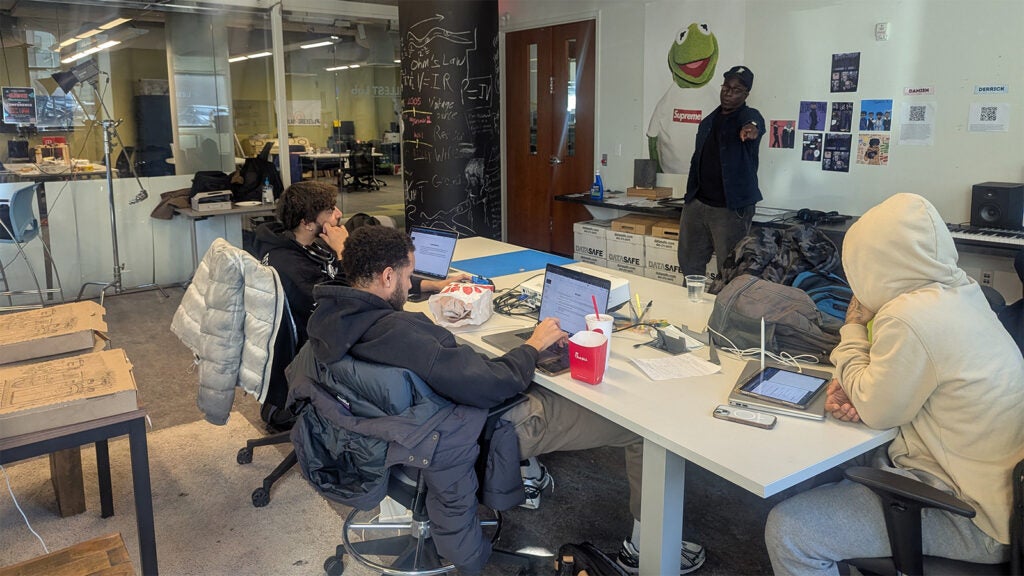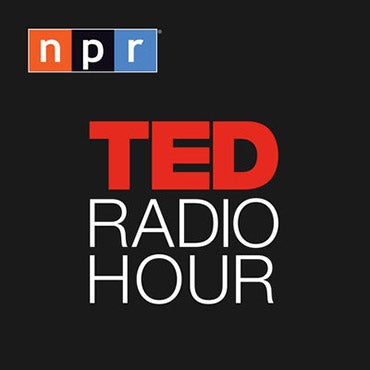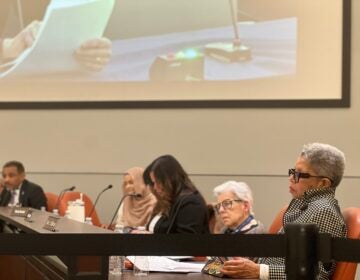Drexel lab uses animation, 3D printers, music to teach STEM disciplines
Students learn animation, 3D printing and making music at Drexel lab dedicated to integrating sciences and the arts.
Listen 1:31
Derrick Banks, 21, a Drexel student majoring in video game making demonstrates sneaker design with a 3D printer. (Stephen Williams/WHYY)
From Philly and the Pa. suburbs to South Jersey and Delaware, what would you like WHYY News to cover? Let us know!
When Derrick Banks came to Drexel University as a student in 2022, he joined the ILLEST Lab.
ILLEST stands for Informal Learning Linking Engineering Science and Technology, as in the so-called STEM disciplines. Soon, Banks was tinkering with 3D printers, designing sneakers and further sharpening his creative skills — making music and creating animated characters for video games.
“It’s the right space for me and it gives me space to create around people with similar interests,” Banks said.
Today, Banks, 21, a junior at Drexel University majoring in video game development, is the manager of the Drexel lab. He grew up in Upper Darby and graduated from Archbishop John Carroll High School.
Banks learned about the lab from Kareem Edouard, assistant professor at Drexel University’s School of Education, who was assigned to him as a mentor. Edouard and H. Bernard Hall, an assistant professor of urban education, oversee the lab.
“The goal is to teach science and STEM-related engagement using arts, fashion and media,” Edouard said. “In the lab we have 600 pairs of sneakers, which we use to teach material science and biology.”
Edouard is also one of the creative producers of the PBS Kids series “Work It Out Wombats!”, which debuted in 2023. He created one of the characters. In that series, the preschool characters demonstrate computational thinking, problem-solving, self-expression and other ideas, practices and processes related to science.
The lab is meant to be a safe, inclusive space to nurture science and math. It is open to students at Drexel and across the Philadelphia school district, including nearby West Philadelphia High School, and the community. It serves about 300 students a year.

This summer, the ILLEST Lab will be the site of a class called “Hip Hop as Humanities: Counterstories for the Canon, Classroom and Country,” for K-12 educators who want to learn how to use hip-hop to teach English and the arts.
The three-week summer institute will include a visit to the Bronx in New York City, considered the birthplace of hip-hop. At Drexel, it will include history, readings, dialogues and professional development workshops by Edouard and Hall, along with visiting lecturers.
It is being funded by a $200,000 grant from the National Endowment for the Humanities.
At the lab, Edouard said they use things popular in hip-hop culture, such as making music beats and designing sneakers, to attract young Black men, who are underrepresented in the STEM-related fields.
For example, among the 600 sneakers are models designed for people that many young people admire, such as former 76ers basketball superstar Allen Iverson.
In addition, Edouard said he wants the students to develop animation, design and other skills necessary to land careers in the workforce. One of the students in the lab has already landed a job at Nike, the popular athletic shoe and clothing maker.
According to a 2021 Pew Center Research analysis of government data, Black people make up 9% of STEM-related fields and Hispanics make up 8%, compared to 67% for white workers in STEM fields.
Christopher Emdin, professor of science education at Teachers College Columbia University, is an advocate of using arts and music, particularly hip-hop culture, to teach STEM-related disciplines.
“In essence, the arts are the way, or the pathway, through which young people make meaning of the things that they learned,” Emdin said. “The arts are also the mechanism through which they make connections and see more concrete concepts and more abstract ones so they can have more nuanced and sophisticated understanding.”

For example, he said, when someone engages in a piece or art or work of art, the brain begins to slow down, “from just going through tasks — to actually concentrating.”
“The arts are one of the chief means that young people learn to concentrate,” Emdin said. “I’m a science and math person, I want every young person to love science and math, but I do understand that once I start putting some formulas and some numbers on the board, I may lose some of them. If I introduce science and math through the arts, I get the engagement.”

Get daily updates from WHYY News!
WHYY is your source for fact-based, in-depth journalism and information. As a nonprofit organization, we rely on financial support from readers like you. Please give today.






